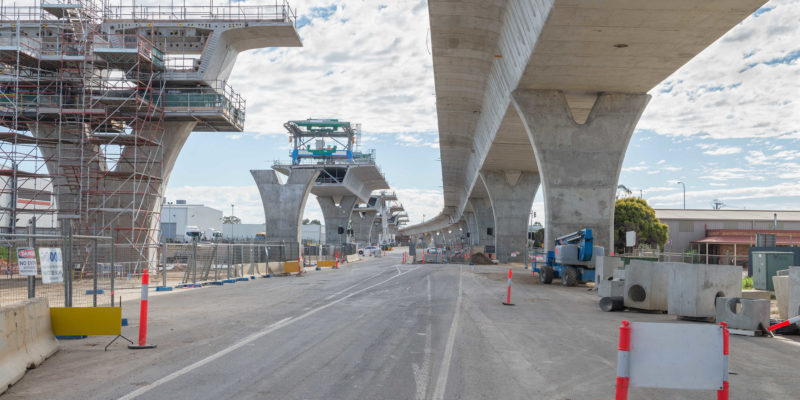Construction is an exciting, multi-faceted, and vast trade that spans over many subsets of industries. Within those subsets of industries lies two types of construction—Horizontal, also referred to as heavy civil, and Vertical.
Horizontal Construction
Simply put, Horizontal Construction involves structures that are longer and wider than they are tall.
Examples of Horizontal Construction Projects
Some examples of heavy civil construction projects include, but are not limited to:
- Infrastructure & Transit—Roads, railways, and bridges
- Power & Communications—Transmission facilities, electric lines, fiber optics
- Subterranean—Pipelines, sewer, waterlines
Vertical Construction
Vertical construction primarily consists of projects that are built vertically and rely heavily on a design by an architect.
Examples of Vertical Construction Projects
- Buildings—Skyscrapers, offices, apartment buildings
- Surface—Parking areas, subsurface or structured facilities
- Structure—building foundation and site work
Differences
The main difference between horizontal and vertical construction is predominantly in a spatial context. Is the project spanning wide or is it growing tall? Those are the obvious differences. Another differentiator in these types of construction projects is funding. Vertical construction leans primarily on the private sector whereas horizontal relies on government, state, and municipal funding. However, there is cross-over in-between.
Vertical construction projects are driven by architecture design where heavy civil projects are often led by structural or civil engineers and design motivations vary. Horizontal construction projects typically focus more on strong bonds with a particular industry. For example, Valiant Group has strong ties within the tight-knit electrical utilities industry and understands the camaraderie and culture of that type of work.
Similarities
As with any construction project, there are concerns related to cost, scope, schedule, and safety. Horizontal and vertical construction projects are focused on meeting the needs of the client as well as keeping within predetermined constraints. Both construction types achieve their goals through design-build methods such as an efficient process workflow, diligent planning, and advanced safety measures.
Industry Outlook
Construction firms are embracing technology as a way to improve, enhance, and streamline the building process. With the goal of reducing cost and waste while remaining on time and within scope, it’s no wonder why technology has become increasingly important to construction management. Horizontal construction will continue to grow as the need to repair aging infrastructures becomes more apparent.
Valiant Group has a solid team of engineers, project managers, and certified individuals with experience, knowledge, and vision when it comes to construction project management. Contact us to get a conversation started.

